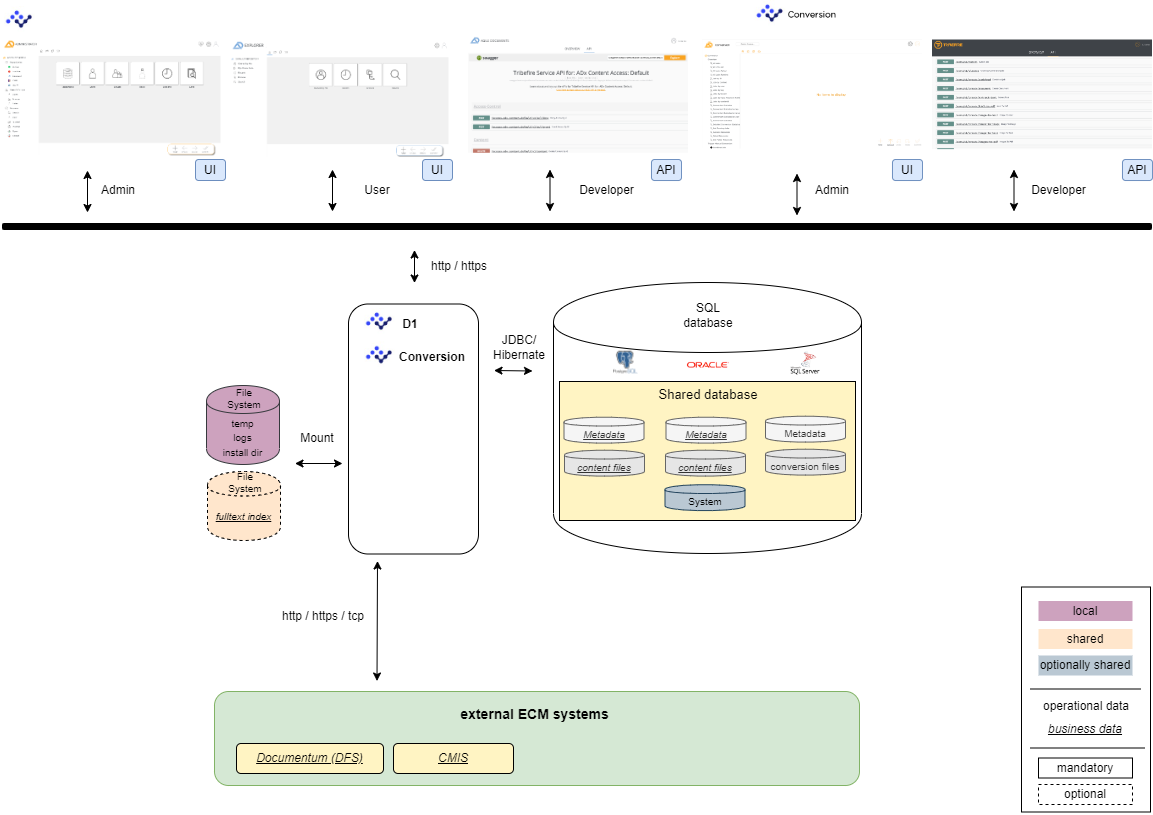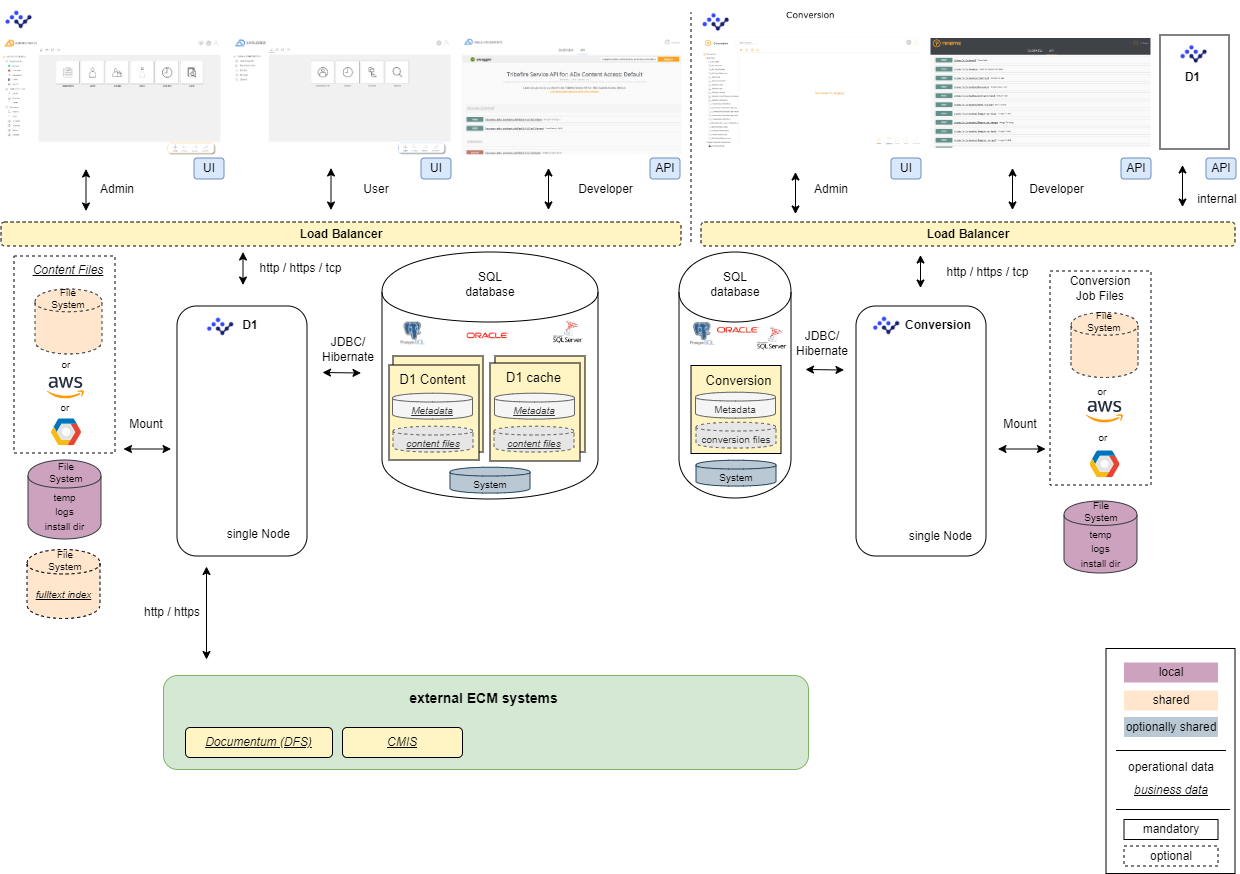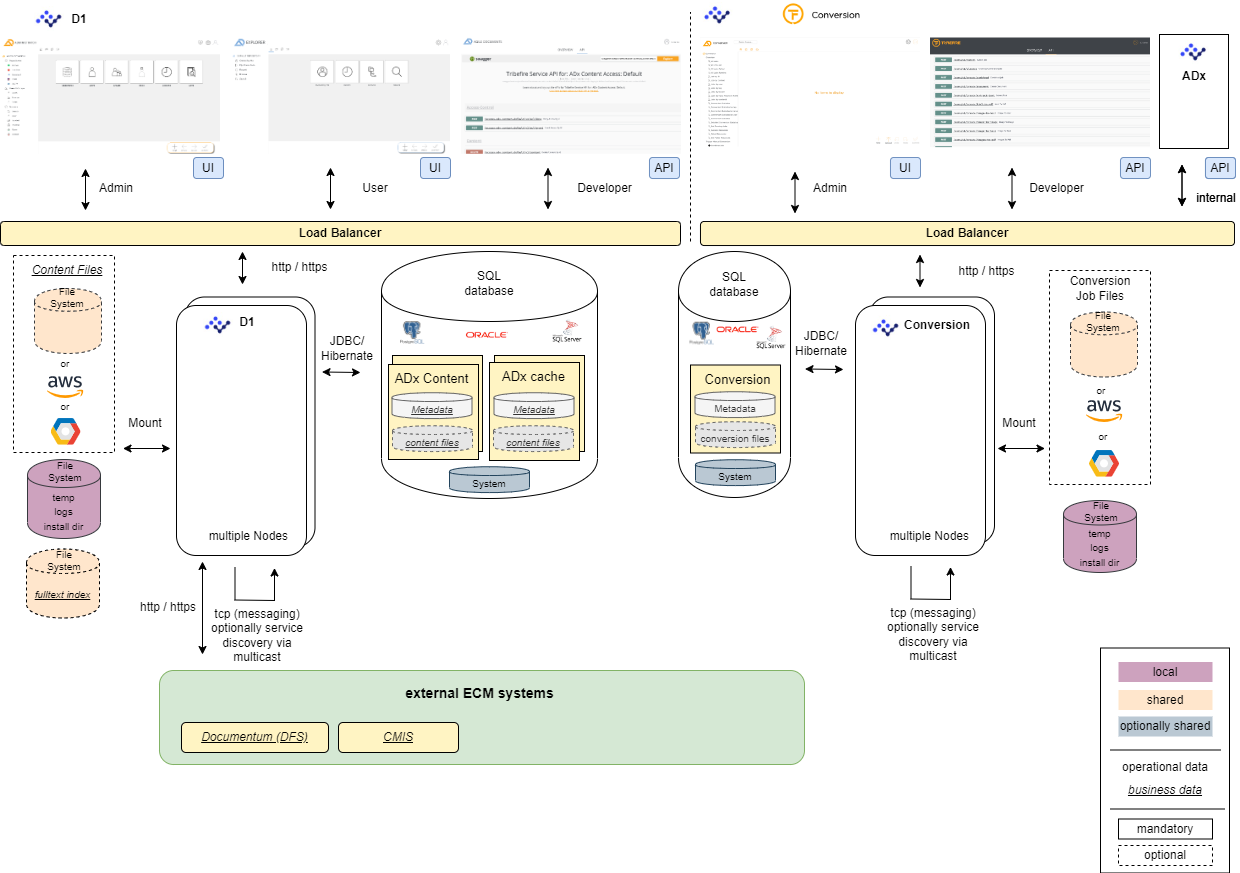Deployment use cases
D1 can be configured in many different ways. Each of the basic setups described on this page covers different requirements.
This document provides setup and configuration examples - the actual configuration depends on specific requirements.
D1 is responsible for providing the UI and API related to documents, including operations such as create content, get content, search contents, and more. For details, check D1 REST API documentation.
TF Conversion is responsible for providing services related to converting documents, such as merge pdfs, split pdf, office to pdf, and more.
POC deployment case: D1 system on a single node
This setup is intended to be used for POC, demo and development (against D1 API) purposes. All instances are on a single node. All data is stored in a single database and the file system is a single mount point.
There is no focus on performance, scalability, fail-safety or backup strategies. The setup provides all the APIs available from D1 and TF conversion.

Development and testing deployment case: D1 and Conversion Service on separate nodes
This setup is intended to be used for development and testing purposes. D1 and Conversion are deployed separate nodes. The communication (internal as well as external) is done via optional load balancers. The databases are separated (e.g. to use TF conversion for multiple D1 deployments or being flexible for developer teams to clean up their instances if necessary) as well as the file system. Since this deployment type is not intended for production use cases, there is no focus on scalability, fail-safety or backup strategies. The separation of D1 and TF conversion separates the CPU-intense conversion from the D1 repositories to size the nodes appropriately. The setup provides all the APIs available from D1 and TF conversion.

Production deployment case: D1 and Conversion Service on separate clustered nodes
This setup is intended to be used for production purposes as well as for the latest test stage. D1 and Conversion are separated on cluster nodes. The communication (internal as well as external) is done via load balancers.
Each system All databases and file system are designed to achieve maximum value of separation, for optimal performance, scalability, fail-safety, backup strategies and responsibilities.

Review the system requirements before you proceed with D1 system installation. See D1 system requirements.